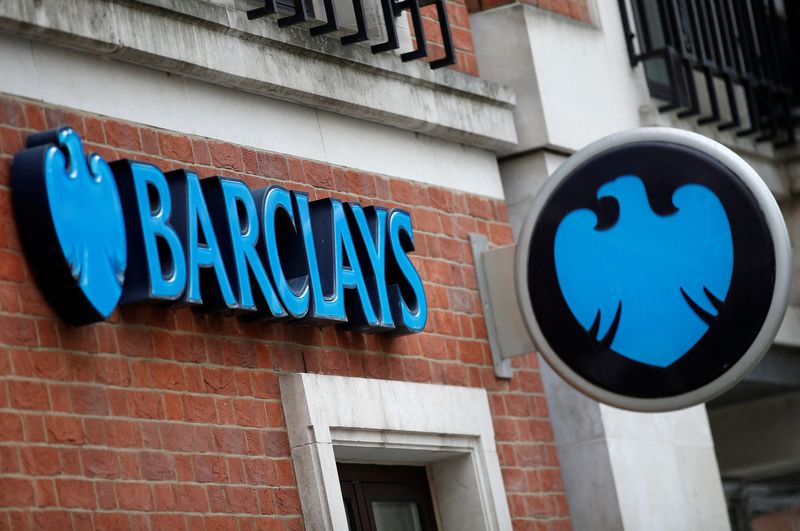
© Reuters. FILE PHOTO: A branch of Barclays Bank is seen, in London, Britain, February 23, 2022. REUTERS/Peter Nicholls
By Lawrence White and Iain Withers
LONDON (Reuters) -Barclays put share buyback plans on hold due to scrutiny by U.S. regulators of a trading blunder it announced last month, piling early pressure on new CEO C.S. Venkatakrishnan.
The British bank on March 28 disclosed that it had exceeded a U.S. limit on sales of structured products, triggering a loss and a potential restatement of its 2021 accounts filed with the U.S. Securities and Exchange Commission.
“ Barclays (LON:) remains committed to the share buyback programme and the intention would be to launch it as soon as practicable following resolution of filing requirements being reached with the SEC,” the bank said on Thursday.
The lender had previously said the 1 billion pound ($1.25 billion) buyback would start in the second quarter, after the mistake which involved U.S. structured products was disclosed.
Dealing with the fallout from the blunder poses an early test for Venkatakrishnan, who took over following the shock exit of Jes Staley in November and who previously ran both the investment bank and the group’s risk operations.
Staley left in the wake of a dispute with British financial regulators over how he described his ties with convicted sex offender Jeffrey Epstein.
Barclays disclosed it had been hit by more than 500 million pounds in litigation and conduct costs in the quarter, including a 320 million pound provision in its investment bank for the over-issuance mistake.
The bank said the estimated total provision for the error was 540 million pounds, the remainder of which would be retroactively recognised in the bank’s 2021 results.
The British bank on Wednesday posted a profit before tax for the three months ended March of 2.2 billion pounds ($2.75 billion), above an average analyst forecast of 1.3 billion pounds but below the 2.4 billion it booked a year earlier.
Its CET 1 ratio, a key indicator of financial strength, fell by 130 basis points to 13.8%, largely due to a 14.7 billion pound rise in risk-weighed assets to 328.8 billion.
($1 = 0.7990 pounds)


Be the first to comment